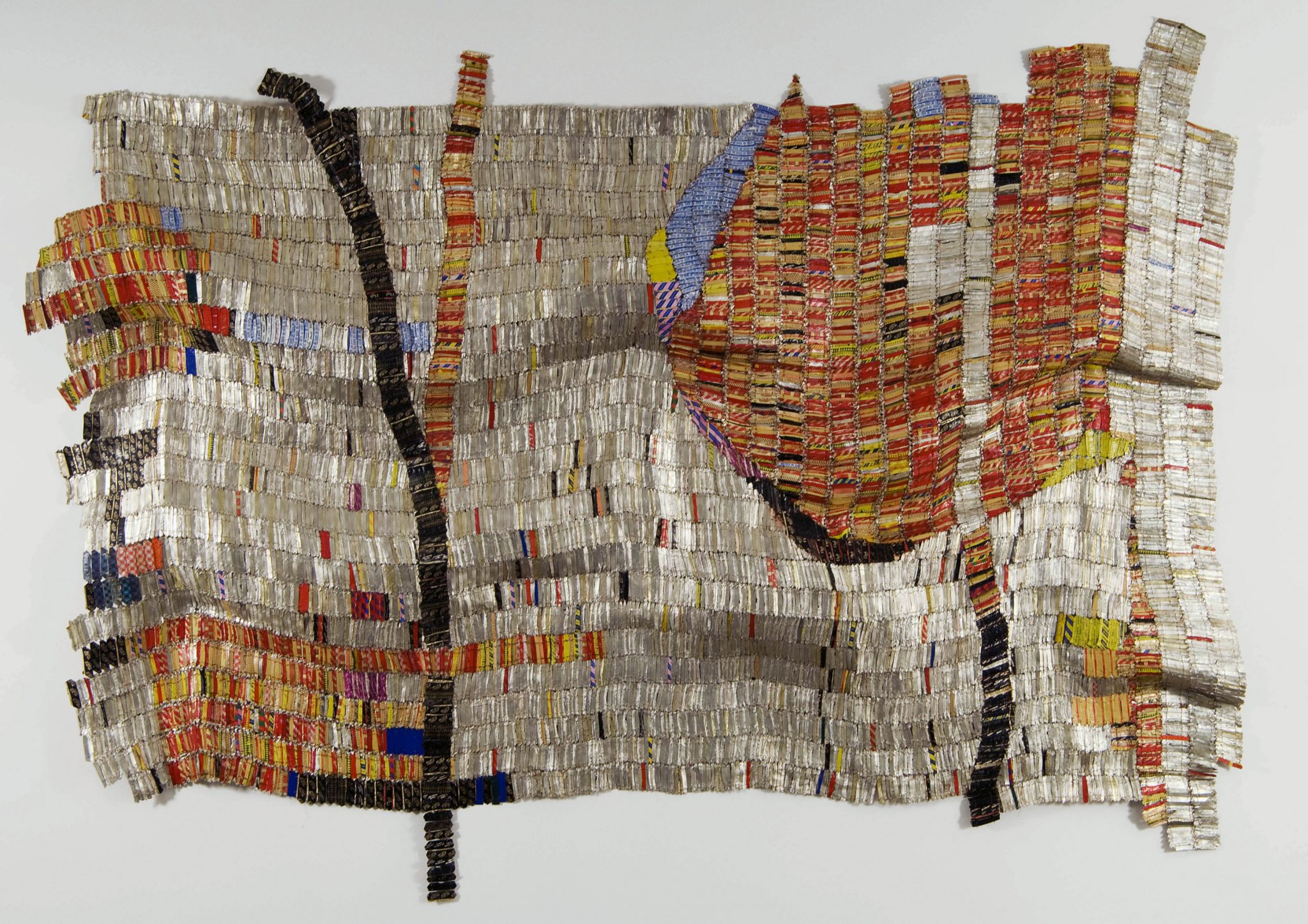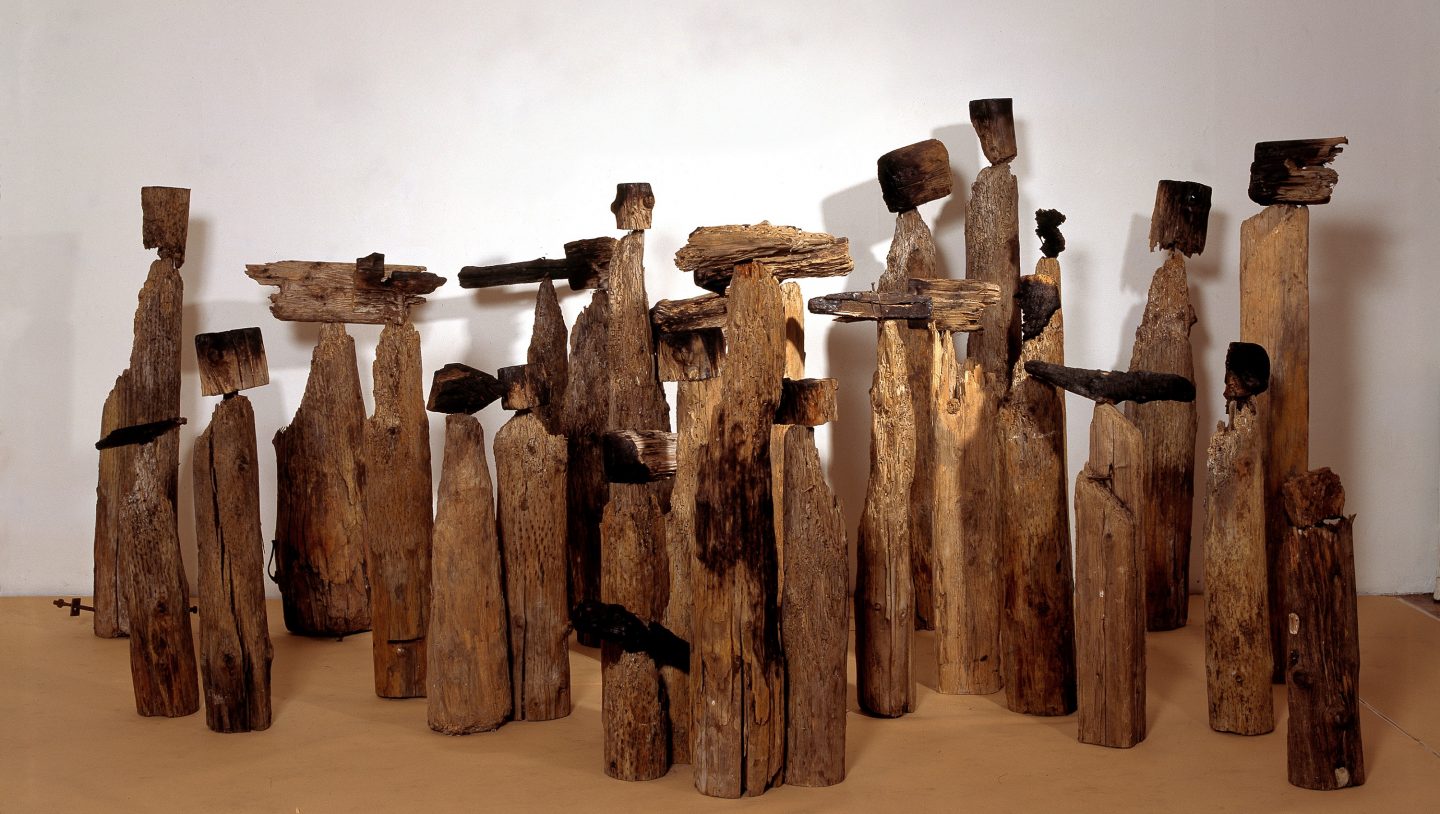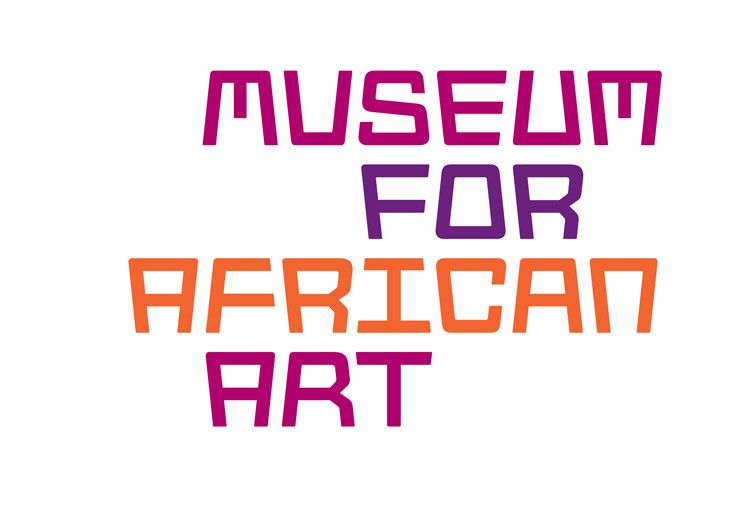PAST EXHIBITION
El Anatsui: When I Last Wrote to You about Africa
OPENS
September 25, 2011
CLOSES
January 22, 2012
SHARE
About the Exhibit
September 25, 2011 – January 22, 2012

Sacred Moon, 2007
Aluminum and copper wire
Photo courtesy: Jack Shainman Gallery
The Blanton Museum of Art at The University of Texas at Austin will serve as the only southwest venue for El Anatsui: When I Last Wrote to You about Africa, a major retrospective of internationally renowned artist El Anatsui organized by the Museum for African Art in New York City. On view September 25, 2011 – January 22, 2012, the exhibition spans four decades and includes approximately 60 works drawn from public and private collections internationally. Simone Wicha, The Blanton’s Director states, “We are thrilled to present to our varied audiences this career survey of the work of El Anatsui, one of the preeminent artists of his generation and an eloquent voice of reflection on West Africa and its place within global histories. Anatsui makes work that is incomparably rich in associations and meanings, yet also accessible. Inventive, witty, and in many cases sumptuously beautiful, the works have earned Anatsui worldwide acclaim. The Blanton will be encouraging K-12 and university students, as well as museum members and our public from throughout the region, to take advantage of this extraordinary opportunity to see and engage with these marvelous works.”

Akua’s Surviving Children, 1996
Wood and metal
Photo courtesy: October Gallery
The Ghanaian-born El Anatsui, who lives and works in Nigeria, is recognized as one of the most original and compelling artists of his generation. Widely known for his shimmering wall sculptures made of thousands of discarded bottle tops, Anatsui has made a career out of transforming discarded materials into forceful visual statements that refer to global, local, and personal histories. The exhibition, curated by Lisa Binder, curator at the Museum for African Art, New York, features several of these acclaimed sculptures, as well as earlier works in wood, ceramic, and metal, and a number of rare drawings, prints, and paintings.
In the 1970s, Anatsui began to manipulate broken ceramic fragments. With their allusions to ancient Nok terracotta sculptures, West African myths about the earth, and cultural references to the use of clay, the ceramic works piece together shattered and devalued histories to form a resplendent new whole. In the same decade, he also made sculptures that recombined signs and symbols from various African cultures and languages in potent three-dimensional forms created by chopping, carving, burning, and etching wood.
In the 1990s, Anatsui made a crucial shift from working with hand tools to carving with a power saw, which enabled him to cut through blocks of wood, leaving a jagged surface that he likened to the scars left by the European colonial encounter with Africa.
In his most recent metal wall sculptures, made during the last decade, Anatsui assembles thousands of Nigerian liquor-bottle tops into visual patterns of stunning sensory impact, transforming this simple material into forms that recall painting, sculpture, and tapestry, among other established art forms. They are so rich in association that they seem to address the universal and the particular, the global and the local, history, memory, and the constancy of change, all at the same time.
When I Last Wrote to You about Africa represents the largest number of Anatsui’s works ever assembled in the United States. Included are prime examples of his monumental wall hangings and floor installations, as well as gestural acrylic paintings and ink drawings, made at various points during his career and shown here outside of Nigeria for the first time. Collectively, the works reveal Anatsui’s artistic process and larger themes of the last thirty years.
About the Artist
El Anatsui was born in Ghana in 1944. He earned a bachelor’s degree in sculpture and apostgraduate diploma in art education from the University of Science and Technology, Kumasi, Ghana. From 1975 to 2010, he was professor of sculpture at the University of Nigeria, Nsukka.
Anatsui’s work has appeared in group exhibitions at the Fowler Museum of Cultural History, UCLA; the Smithsonian National Museum of African Art, Washington, DC; the October Gallery, London; Africa Remix: Contemporary Art of a Continent, andWho Know Tomorrow at the Alte Nationalgalerie, Berlin. His work has also been included in numerous biennial exhibitions, including in Venice (1990 and 2007), Havana (1994), Johannesburg (1995), Gwangju (2004), as well as Prospect.1, New Orleans (2008). Gawu, a solo show of metal sculptures, traveled throughout Europe, North America, and Asia from 2004 to 2008. In 2008, Anatsui received the Visionaries Artist Award from the Museum of Arts and Design in New York City. He is also a laureate of the 2009 Prince Claus Award. His work is collected by institutions internationally, including the British Museum, London; Centre Pompidou, Paris; The Metropolitan Museum of Art and The Museum of Modern Art, New York; the North Carolina Museum of Art, Raleigh; the Denver Art Museum, Denver; the Nelson-Atkins Museum, Kansas City; and the de Young Museum, San Francisco. Since 2009 The Blanton has had a major wall hanging—a promised gift from Jeanne and Micheal Klein—on view in its collection galleries, where it has become a favorite of visitors.
El Anatsui: When Last I Wrote to You about Africa is organized by the Museum for African Art, New York, and has been supported, in part, by grants from the National Endowment of the Arts and The Andy Warhol Foundation for the Visual Arts.



Generous funding for this exhibition at The Blanton is provided by Jeanne and Michael Klein with additional support from Becky Beaver and John Duncan, the Berman Family Foundation, Michael Chesser, Melanie Lawson and John Guess, Jr., Marilyn Oshman, and the Alice Kleberg Reynolds Foundation, and by a grant from Houston Endowment Inc. in honor of Melissa Jones for the presentation of contemporary art at The Blanton.

